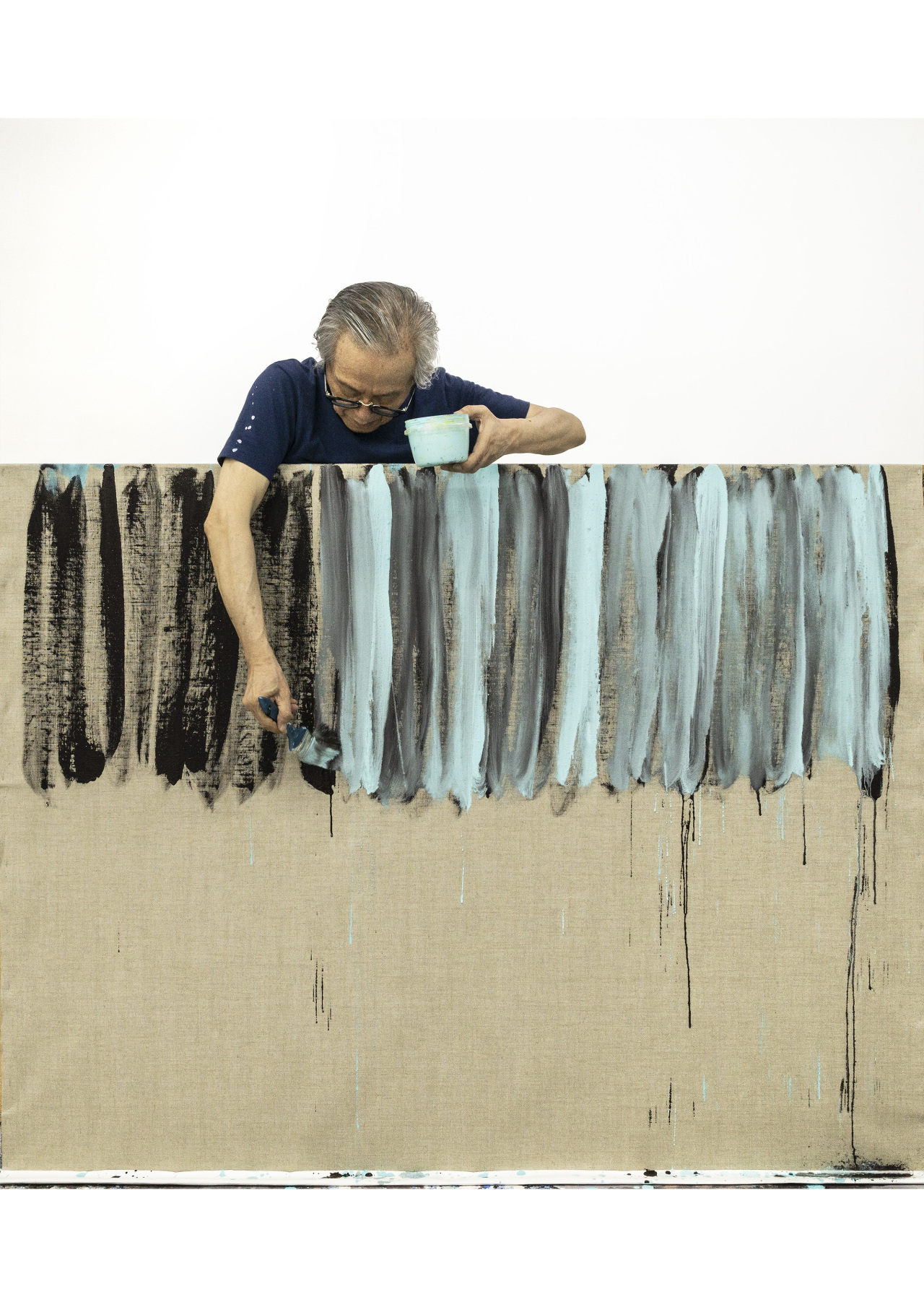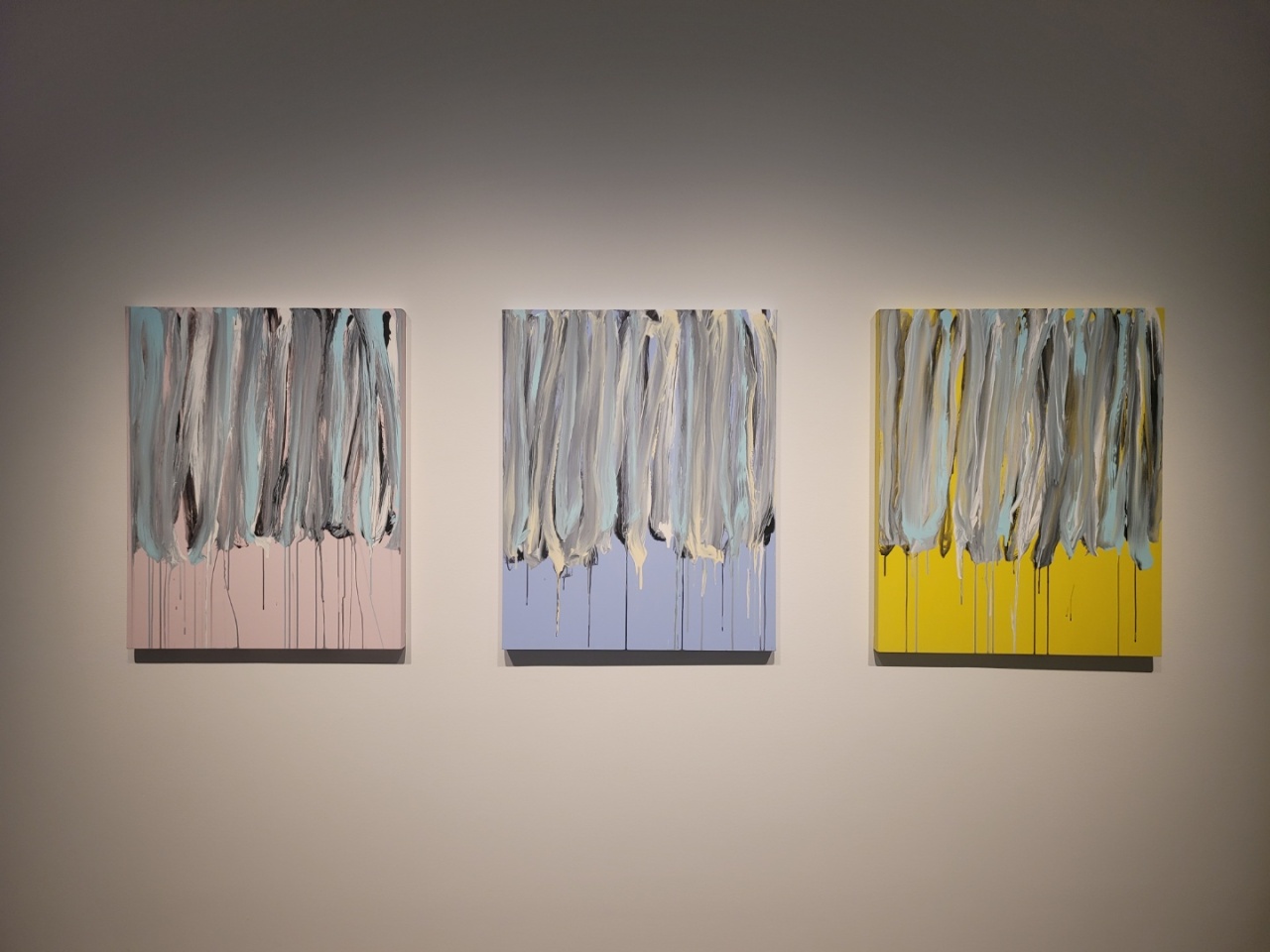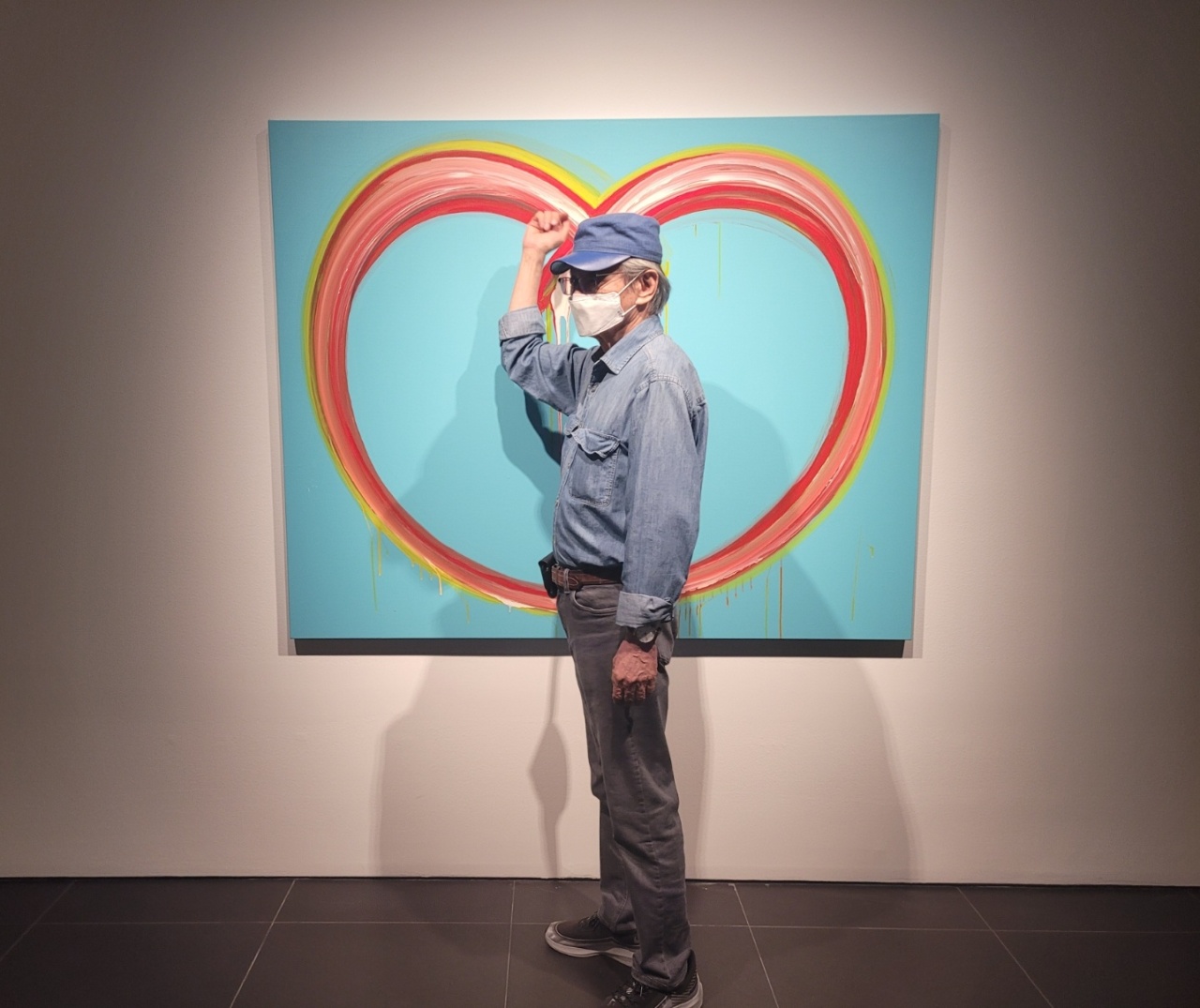 |
Lee Kun-yong works on a ”Body Scape“ painting. (Gallery Hyundai) |
Contemporary artist Lee Kun-yong lets the natural movements of his body dictate where the lines fall on the canvas. Instead of directly facing the canvas he stands behind or against it, and sometimes next to it without seeing his work as he is creating it.
Lee named the series “Body Scape,” presenting nine painting methodologies that he created since 1976. “Lee Kun-yong: Body Scape” at Gallery Hyundai in central Seoul shows how Lee developed the series over the decades. He previously showed another art series, “Event-Logical,” at the gallery in 2016.
Born in 1942, Lee belongs to the first generation of Korea’s avant-garde artists. A graduate of the Hongik University College of Fine Arts in Seoul, he played a pivotal role in forming the Space and Time Group in 1969 and the Korean Avant-Garde Association in 1970.
 |
An installation view of “Lee Kun-yong: Body Scape” at Gallery Hyundai in central Seoul (Park Yuna/The Korea Herald) |
Lee recalled how his art was influenced by his father, a Protestant minister, and his mother, a nurse, who attempted to persuade him to become a doctor so he could be a “useful person.” Lee instead pursued his dream of becoming an artist, deciding that “art is to push a worthless thing to the limit,” he said in a video interview released by the National Museum of Modern and Contemporary Art, Korea, at the end of last year.
Lee defies the standard rules of painting, freeing himself by purposelessly painting lines in his own way. His paintings reflect how his body interacts with the canvas and the painting medium.
“I see paintings outside of paintings. If you see look into art, there are so many theories and rules which may give you a headache. The lines I paint come from the outside, not created inside the canvas,” Lee told The Korea Herald as he showed his works on display at Gallery Hyundai.
 |
Lee Kun-yong demonstrates how he creates “Body Scape” paintings. (Park Yuna/The Korea Herald) |
Lee values perception when it comes to art, saying he was influenced in this regard by the French philosopher Maurice Merleau-Ponty. Perception relies on sensory information obtained by seeing, feeling, touching. Even stereotypes can be rectified through perception, Lee said.
“The attitude with which you perceive the world through different relations and the phenomenon that takes place as the result is what I pursue,” Lee said. “This idea is opposed to people who act and judge based on their own stereotypes and predetermined systems,” Lee said.
Representing South Korea at the 1973 Biennale de Paris, Lee showcased “Corporal Term.” He brought a tree into the gallery -- roots, soil and all -- aiming to foster ideas about what art is by displaying an object seemingly unrelated to art. His art later evolved to include performative art with the “Event-Logical” series. Since he first showcased the “Body Scape” series in the mid-1970s he has presented variations on the paintings, and in the 2010s he started to diversify the colors and gestures.
 |
An installation view of “Lee Kun-yong: Body Scape” at Gallery Hyundai in central Seoul (Gallery Hyundai) |
"My paintings have nothing to do with depicting objects or existing artistic styles. The important point to me is how my body and the art medium meet on the canvas and how it turns out. I see the ‘phenomenon of painting’ that happens on a canvas. The acrylic paint rolling down on a canvas is part of it,” Lee said.
“Some people simply say the paintings look like a heart, wings or something else, but that is not all,” he said. “I knew I was painting hearts after 30 years, thanks to people who were saying it.”
The 79-year-old artist, who is active in the art scene, expects the “Body Scape” series to evolve as he ages.
“How interesting it will be if I paint with my shaky hands as I turn, let’s say, 120 years old. That will be the real encounter of my body and a canvas,” he said.
The exhibition runs through Oct. 31, and online reservations are required.
By Park Yuna (
yunapark@heraldcorp.com)










![[Today’s K-pop] Blackpink’s Jennie, Lisa invited to Coachella as solo acts](http://res.heraldm.com/phpwas/restmb_idxmake.php?idx=644&simg=/content/image/2024/11/21/20241121050099_0.jpg)
